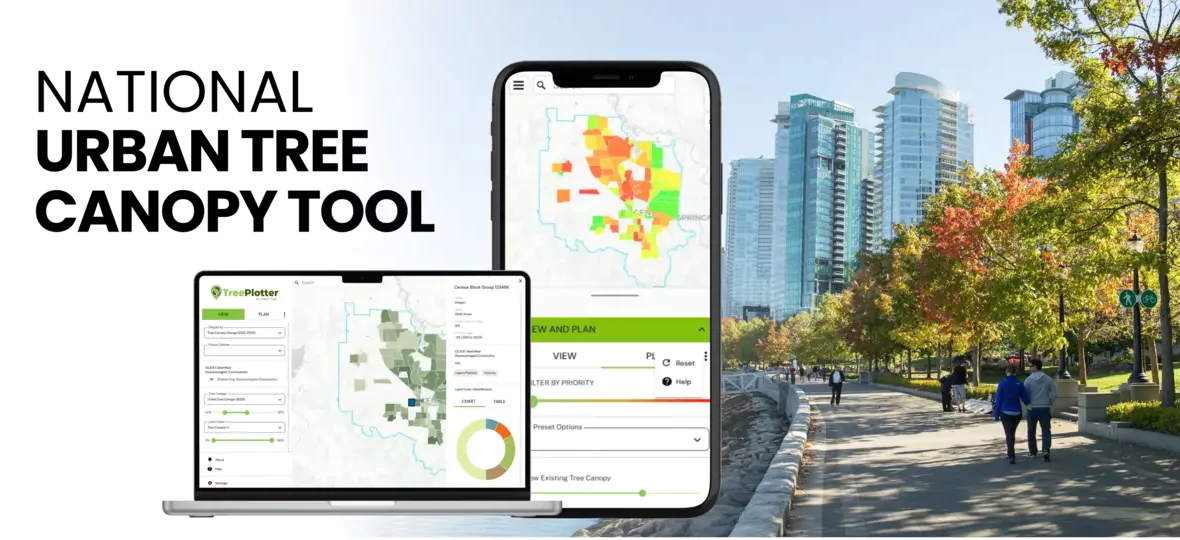Treeplotter Tool for Planit Geo
Development of “Treeplotter” tool for Planit Geo

Project Overview
The Treeplotter project aimed to develop a read-only web application for visualizing national tree canopy coverage and associated demographic data. The application was designed to be highly performant, accessible, and maintainable, aligning with Planit Geo's existing technology stack and design standards.
Project Objectives
The primary objectives of the project were to:
- Develop a static web application capable of displaying tree canopy data and related information.
- Ensure compatibility with various devices and screen sizes.
- Implement robust accessibility features to adhere to WCAG standards.
- Utilize specified technologies and libraries for efficient development and maintenance.
- Create a maintainable codebase with comprehensive documentation.
Project Scope
The project encompassed the development, implementation, and training of an ESRI-based platform, including:
- Frontend development:: Building the user interface using React, TypeScript, and MUI components.
- Map integration: Incorporating OpenLayers for interactive map visualization.
- Data integration:Integrating tree canopy coverage and demographic data sets into the application.
- Accessibility: Ensuring compliance with WCAG standards for inclusivity.
- Localization: Implementing language support using the i18next library.
- Testing: Conducting unit tests and ensuring code quality through linting and formatting.
- Documentation: Creating comprehensive documentation for development and deployment.
Project Outcomes and Impact
The Treeplotter web application successfully met the project objectives and delivered a valuable tool for visualizing tree canopy data. Key outcomes include:
- User-friendly interface: A visually appealing and intuitive interface that enhances user experience.
- Data visualization: Effective presentation of tree canopy coverage and demographic data.
- Accessibility: Compliance with WCAG standards, ensuring inclusivity for all users.
- Performance optimization: A fast-loading and responsive application.
- Maintainable codebase: Well-structured code with clear documentation for future enhancements.
Key Performance Indicators
Project success was measured through the following KPIs:
- Load time: Achieved fast load times for optimal user experience.
- Accessibility compliance: Successfully met WCAG accessibility standards.
- Code quality: Maintained high code quality through linting and unit testing.
- User satisfaction: Positive feedback from stakeholders on the application's usability and functionality.
Conclusion
The Treeplotter web application has been successfully developed and delivered, providing a valuable tool for analyzing tree canopy data. The project adhered to the specified technical requirements and delivered a high-quality, maintainable product.
- React (TypeScript)
- Docker
- CI/CD
- S3 Bucket
© Copyright 2025 LGEOM. All Rights Reserved
